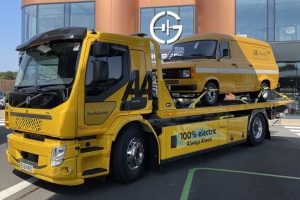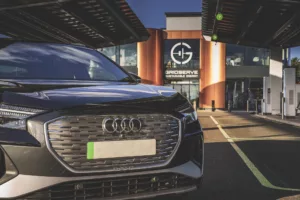

Unpredictable storms, dropping temperatures and heavy traffic can combine to make travelling during the festive period particularly hazardous.
For electric car drivers to avoid the worst of the winter weather, preparation is key, which is why we’ve compiled a list of dos and don’ts to help you get ready to drive home for Christmas.
DO stay plugged in
Batteries, regardless of if they’re in an electric car or your smartphone, perform better when they’re not cold. If possible, keeping your electric car plugged in at home when not in use will help the battery stay warm by drawing a small amount of charge during those cold winter nights.
DO plan your route
We’d always recommend checking your route before setting off so you know where you can stop off if you start to run low on charge this winter. Check out our location map here to plot your route or download our app.
We’d also recommend checking out Google Maps and the energy efficient mode. Input your vehicle and it’ll calculate the best route for you based on energy-efficiency, real-time traffic and road conditions. The “green” route will be flagged with a leaf and a percentage showing how much more efficient it is.
DO pre-condition your car
Pre-conditioning, often controlled via your vehicle’s app, lets you set a desired temperature in your car before leaving the house. Not only will it make it nice and warm for when you get in, if you’ve pre-conditioned while plugged into your home charger then your car’s battery won’t have been used.
In winter, pre-conditioning will also defrost your windscreen and windows, meaning the days of boiling kettles or de-icer spray can be left to your neighbours. Not only is it convenient, it’s safer for your car too, as trying to operate electric windows, door handles, or wipers before they’re fully defrosted can cause damage.
DON’T fast charge from cold
While winter temperatures can reduce your vehicle range, the cold can also have a negative impact on charging speeds. That’s why we’d always recommend pre-conditioning to get things heated up quickly or drive a few miles before stopping off to charge on the GRIDSERVE Electric Highway. Some of the latest electric cars, like the Porsche Taycan, will do the legwork for you. Simply put an EV charging location into your sat nav and the car will prime the battery in preparation. Of course, charging will still work when it’s cold, you might just be waiting a bit longer to see the fastest speeds.
DO make use of a heat pump
Heating the interior of the car on very cold winter days with a traditional heater will drain your range. That’s why heat pumps, available as standard or as options on most electric cars, can be the efficient answer. Heat pumps work the opposite way to a home fridge. It takes cold outside air, compresses it at high pressure, and then releases the heat created to keep you and your passengers warm. For example, take Volkswagen’s system, available on the ID.3, ID.4, and ID.5 which uses 40% less power to heat the interior compared to a car without a heat pump.
DO heat the person not the car
If you don’t have a heat pump and don’t want to dress like you’re trekking to the North Pole to stay warm this winter, then to maximise range consider ditching the traditional heater and use the heated seats and steering wheel instead. These consume a lot less energy than a heater that has to blow air around the whole cabin.
DON’T drive too quickly
Driving sensibly and at a speed suitable for conditions isn’t just a winter tip, it’s something you should be doing all the time. But during winter months it’s even more important. Slow down if there’s been ice overnight or there’s heavy rain obscuring visibility – not only will you be safer but you’ll add extra miles to your range. And don’t think your four-wheel drive system is untouchable as it’s still susceptible to loss of traction when braking on slippery surfaces.
If you make a conscious effort to drop your speed by five to 10mph as well as switching the car into Eco mode, you’ll be surprised how much further you’ll get before needing to stop for a charge.
DON’T always rely on regenerative braking
Regen braking is one of the electric car’s party tricks to add range. However, in icy conditions it’s best avoided or kept on low to make sure you have full control over braking on unexpected slippery patches. Instead, focus on anticipating the road ahead to save energy this winter. Avoid harsh acceleration and focus on maintaining steady momentum. This can easily add on a few crucial extra miles.
DO consider winter tyres
As the UK continues to face harsher winters, the need for season-specific tyres is increasingly important. Switching to a set of winter tyres can massively increase grip as the rubber is designed for the cold (especially below seven degrees Celsius) and the tread pattern will shift water much quicker than standard summer tyres.




